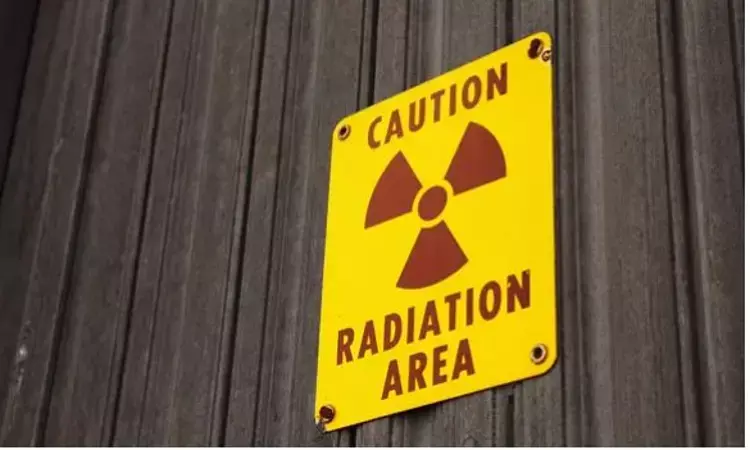- Home
- Medical news & Guidelines
- Anesthesiology
- Cardiology and CTVS
- Critical Care
- Dentistry
- Dermatology
- Diabetes and Endocrinology
- ENT
- Gastroenterology
- Medicine
- Nephrology
- Neurology
- Obstretics-Gynaecology
- Oncology
- Ophthalmology
- Orthopaedics
- Pediatrics-Neonatology
- Psychiatry
- Pulmonology
- Radiology
- Surgery
- Urology
- Laboratory Medicine
- Diet
- Nursing
- Paramedical
- Physiotherapy
- Health news
- Fact Check
- Bone Health Fact Check
- Brain Health Fact Check
- Cancer Related Fact Check
- Child Care Fact Check
- Dental and oral health fact check
- Diabetes and metabolic health fact check
- Diet and Nutrition Fact Check
- Eye and ENT Care Fact Check
- Fitness fact check
- Gut health fact check
- Heart health fact check
- Kidney health fact check
- Medical education fact check
- Men's health fact check
- Respiratory fact check
- Skin and hair care fact check
- Vaccine and Immunization fact check
- Women's health fact check
- AYUSH
- State News
- Andaman and Nicobar Islands
- Andhra Pradesh
- Arunachal Pradesh
- Assam
- Bihar
- Chandigarh
- Chattisgarh
- Dadra and Nagar Haveli
- Daman and Diu
- Delhi
- Goa
- Gujarat
- Haryana
- Himachal Pradesh
- Jammu & Kashmir
- Jharkhand
- Karnataka
- Kerala
- Ladakh
- Lakshadweep
- Madhya Pradesh
- Maharashtra
- Manipur
- Meghalaya
- Mizoram
- Nagaland
- Odisha
- Puducherry
- Punjab
- Rajasthan
- Sikkim
- Tamil Nadu
- Telangana
- Tripura
- Uttar Pradesh
- Uttrakhand
- West Bengal
- Medical Education
- Industry
Testicular cancer linked to diagnostic radiation below the waist; claims study

Exposure to diagnostic radiation below the waist may increase TGCT risk, suggests a recent study publiahed in PLOS ONE. The authors have further made a call for prioritizing the reduction of radiation doses to the testes if larger studies validate the findings.
Testicular germ cell tumor (TGCT) has seen a 20-fold increase in the last decade due to the use of diagnostic radiation. More recently, direct epidemiologic evidence supports an association between diagnostic radiation and risk of several types of cancer. Whether an association between exposure to diagnostic radiation and elevated TGCT risk exists is currently unknown. Although testicular dose during diagnostic radiation can be reduced significantly with testicular shielding [15], audits of utilization in children show that appropriate use and positioning occurs in only 25% of diagnostic scans [16]. In the absence of shielding, diagnostic radiation doses to the testes can exceed 20mSv [15]. Therefore, if diagnostic radiation is shown to confer an elevated TGCT risk a readily available intervention exists.
Taking a cue from such previous observations, researchers undertook the current study.For the study design, Between September 2007 and May 2013, the team used a hybrid strategy incorporating both a clinic-based and a population-based approach to enroll men between the ages of 18 and 55 with an incident diagnosis of TGCT who resided in one of nine Pennsylvania counties.
Participants reported on exposures to 1) x-ray or CT below the waist and 2) lower GI series or barium enema, which consists of a series of x-rays of the colon. The team also derived a combined measure of exposure. They used logistic regression to determine the risk of developing TGCT according to categories of exposures (0, 1–2, or ≥3 exposures) and age at first exposure, adjusting for age, year of birth, race, county, body mass index at diagnosis, family history of TGCT, and personal history of cryptorchidism.
On data analysis, the following facts emerged.
- There were 315 men with TGCT and 931 men without TGCT in our study.
- Compared to no exposures, risk of TGCT was significantly elevated among those reporting at least three exposures to x-ray or CT (OR≥3 exposures, 1.78; 95% CI, 1.15–2.76; p = 0.010), lower GI series or barium enema (OR≥3 exposures, 4.58; 95% CI, 2.39–8.76; p<0.001), and the combined exposure variable (OR≥3 exposures, 1.59; 95% CI, 1.05–2.42; p = 0.029).
- The risk of TGCT was elevated for those exposed to diagnostic radiation at age 0–10 years, compared to those first exposed at age 18 years or later, although this association did not reach statistical significance (OR, 2.00; 95% CI, 0.91–4.42; p = 0.086).
For full article follow the link: Nead KT, Mitra N, Weathers B, Pyle L, Emechebe N, Pucci DA, et al. (2020) Lower abdominal and pelvic radiation and testicular germ cell tumor risk. PLoS ONE 15(11): e0239321. https://doi.org/10.1371/journal.pone.0239321
Dr Satabdi Saha (BDS, MDS) is a practicing pediatric dentist with a keen interest in new medical researches and updates. She has completed her BDS from North Bengal Dental College ,Darjeeling. Then she went on to secure an ALL INDIA NEET PG rank and completed her MDS from the first dental college in the country – Dr R. Ahmed Dental College and Hospital. She is currently attached to The Marwari Relief Society Hospital as a consultant along with private practice of 2 years. She has published scientific papers in national and international journals. Her strong passion of sharing knowledge with the medical fraternity has motivated her to be a part of Medical Dialogues.
Dr Kamal Kant Kohli-MBBS, DTCD- a chest specialist with more than 30 years of practice and a flair for writing clinical articles, Dr Kamal Kant Kohli joined Medical Dialogues as a Chief Editor of Medical News. Besides writing articles, as an editor, he proofreads and verifies all the medical content published on Medical Dialogues including those coming from journals, studies,medical conferences,guidelines etc. Email: drkohli@medicaldialogues.in. Contact no. 011-43720751


